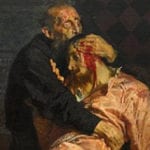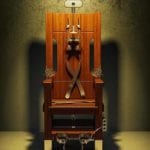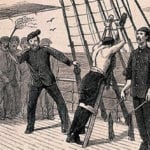 Weird Stuff
Weird Stuff  Weird Stuff
Weird Stuff  Mysteries
Mysteries 10 Tragic Disappearances and Deaths in Joshua Tree National Park
 History
History 10 Ways Childhood Really Sucked in the Old West
 Music
Music 10 Name Origins of Famous Bands from the 1990s
 Religion
Religion 10 Biggest Turnarounds by the Catholic Church
 Weird Stuff
Weird Stuff 10 Unbelievable Times Laws Had Unintended Consequences
 Humans
Humans Ten Historic Women Who Deserve Way More Credit Than They Got
 Movies and TV
Movies and TV 10 Films That Spawned Major Lawsuits
 History
History Ten Times Towns Were Wiped Off the Face of the Earth
 Creepy
Creepy 10 of the Most Disturbingly Haunted Public Houses in the UK
 Weird Stuff
Weird Stuff 10 Niche Subcultures That Are More Popular Than You Might Think
 Mysteries
Mysteries 10 Tragic Disappearances and Deaths in Joshua Tree National Park
 History
History 10 Ways Childhood Really Sucked in the Old West
Who's Behind Listverse?

Jamie Frater
Head Editor
Jamie founded Listverse due to an insatiable desire to share fascinating, obscure, and bizarre facts. He has been a guest speaker on numerous national radio and television stations and is a five time published author.
More About Us Music
Music 10 Name Origins of Famous Bands from the 1990s
 Religion
Religion 10 Biggest Turnarounds by the Catholic Church
 Weird Stuff
Weird Stuff 10 Unbelievable Times Laws Had Unintended Consequences
 Humans
Humans Ten Historic Women Who Deserve Way More Credit Than They Got
 Movies and TV
Movies and TV 10 Films That Spawned Major Lawsuits
 History
History Ten Times Towns Were Wiped Off the Face of the Earth
 Creepy
Creepy 10 of the Most Disturbingly Haunted Public Houses in the UK
10 Influential Women Executed During The Reign Of The Tudors
The Tudor dynasty, which reigned for nearly 120 exciting years, gave rise to five monarchs who are among the most infamous and provocative sovereigns in history. The Tudors’ century of prosperity, hardships, intrigue, and war was unavoidably riddled with death—most notably at the hands of the ruthless King Henry VIII.
According to historians, Henry VIII allegedly executed between 57,000 and 72,000 people. Although these numbers may be an exaggeration, his three children—Edward VI, Mary I, and Elizabeth I—also had the blood of many victims on their hands. Some notable women lost their lives due to their politics, their beliefs, and their hearts.
10 Margaret Ward
1588
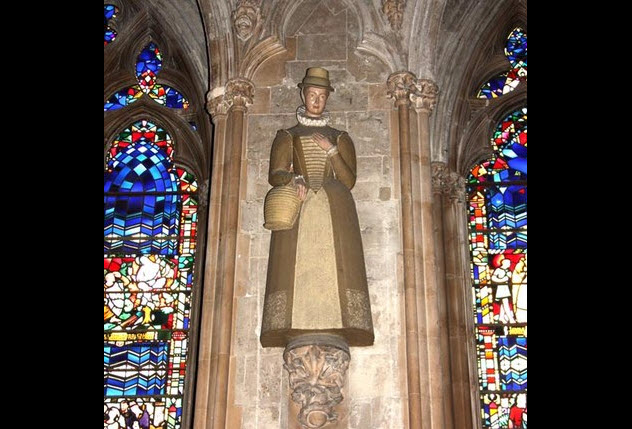
The early life of Margaret Ward was always a mystery because there is little information about her upbringing. It is known, however, that she was born in Congleton, Cheshire, and later lived in the service of a lady named Whitall in London.
It had come to Margaret’s attention that a priest named Richard Watson was held captive, starved, and mistreated at Bridewell Prison, a repurposed palace used to punish the unruly and to house homeless children in London.
After Watson was moved to a bigger cell, Margaret devised a plan to help him escape. She arranged for a boat to transport the priest to safety and then smuggled a rope to him so that he could safely lower himself from the prison to the ground.
When the plan was foiled, Margaret was arrested and questioned under torture. During her trial eight days later, Margaret bravely said on the record that she never regretted “delivering that innocent man from the hands of those bloody wolves.”
A devout Catholic, Margaret was given the choice to attend services at an Anglican church and beg Queen Elizabeth I to pardon her of her crimes or hang by the neck. She refused to beg and was executed on August 30, 1588.
Considered a martyr, Margaret Ward was honored and canonized on October 25, 1970. Thereafter, she was called Saint Margaret Ward.
9 Elizabeth Barton
1534
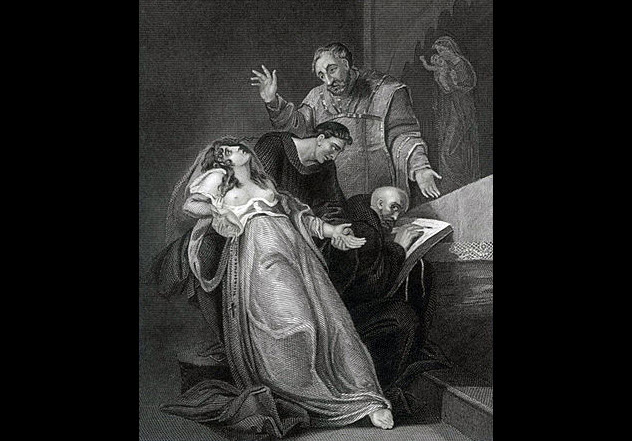
Born in 1506, Elizabeth Barton suffered from epilepsy as a young girl. While living as a teenage servant in the house of Thomas Cobb (overseer of the archbishop of Canterbury’s estate), an illness came upon Elizabeth that caused hysteria. Her seizures or “trances,” which sometimes lasted for days, produced rantings that were interpreted as divine prophecies. As a result, her popularity grew.
After she recovered from her illness, pilgrims started to flock to Elizabeth. She used her popularity to contrive more prophecies, even saying that she had a direct line to the Virgin Mary. The archbishop grew suspicious and initiated an investigation.
The prophecy that sealed Elizabeth’s fate was about Henry VIII. Supposedly, she said that he “should no longer be king of this realm . . . and should die a villain’s death” if he were to divorce his current wife, Catherine of Aragon.
During questioning, Elizabeth confessed to her treason and was later sentenced to death. Along with her allies, she was executed by hanging at the gallows of Tyburn on April 20, 1534.
8 Lady Jane Grey
1554
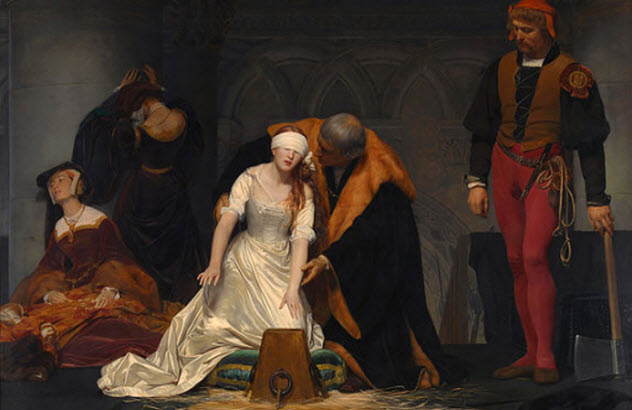
At the tender age of 10, Jane Grey entered the household of Katherine Parr, Henry VIII’s final wife. There, she was raised strongly Protestant and became more spiritual with age.
Jane’s exposure to life at court did not begin until her father was made duke of Suffolk in 1551. It was there that the duke of Northumberland acted as regent for Henry’s son, Edward VI, who was unfit to rule due to his young age.
As Edward was dying of tuberculosis, Northumberland sought to deny the throne to Henry’s daughters—the Catholic Mary I and Edward’s half sister, Elizabeth I—and position Jane to be the next royal heir.
Northumberland swayed the king to make his sisters illegitimate, and after his death, Jane was declared queen. The new queen’s succession was incredibly short-lived, however, as Mary moved to usurp Jane’s throne. After Jane relinquished her sovereignty in just nine days, Mary was crowned queen due to popular support.
Queen Mary was unmerciful and locked Jane, her husband, and her father in the Tower of London in 1553 for high treason. The following year, Jane and her husband were both beheaded.
7 Jane Boleyn
1542
In 1524, the well-groomed and wealthy Jane Parker married into the Boleyn family, one of the most infamous families associated with the Tudor dynasty. It is widely believed that her union with George Boleyn began to crumble soon after they were wed due to his promiscuity and alleged homosexual flings.
To make matters worse, Jane was supposedly jealous of George’s sister, Anne Boleyn. Jane played an instrumental role in the demise of her husband and Anne, the future queen of England.
Although Jane had previously schemed against those at court, she waited 11 years to strike out against her husband. She testified that George and Queen Anne had an incestuous relationship and implied that George had fathered a baby that Anne had miscarried.
Years later, Jane found herself in the middle of another broken marriage. This time, it was King Henry VIII and Anne of Cleves. Their marriage was annulled thanks in part to Jane’s testimony that the marriage had never been consummated.
Jane’s demise came after she played a part in arranging secret meetings between Queen Catherine Howard and her sweetheart, Thomas Culpepper. For this, Jane was imprisoned and questioned for months. She suffered a mental breakdown before being declared insane. With a single blow of the axe, Jane was beheaded at the Tower of London on February 13, 1542.
6 Anne Askew
1546
Anne Askew was a rebel with a cause who refused to change her surname when she was forced to marry at 15 years old. Anne was also an avid reader of the Bible—an act that King Henry VIII declared illegal for women and low-ranking men. Ignoring criticism from her church and other naysayers, Anne followed her own course and converted to Protestantism.
After Anne divorced her husband, who protested against her rebellious spirit, she traveled to London where she had friends in high places and enemies who were suspicious. Lord Chancellor Thomas Wriothesley, who kept a close eye on Anne’s movements, was one of those enemies.
Anne began openly preaching the teachings of the Bible. But her escapades were cut short when she was arrested and charged with heresy in 1545. Later, she was set free due to lack of testimony against her. The following year, she was arrested for heresy again and imprisoned at the Tower of London.
While there, Anne was tortured despite confessing to her crimes. Staying true to herself, Anne refused to name other Protestants and was sentenced to execution on July 16, 1546. Unable to walk as a result of her torture, Anne was carried in a chair to Smithfield and tied to a stake. When she refused to publicly renounce her beliefs, Anne was burned alive.
5 Margaret Pole
1541
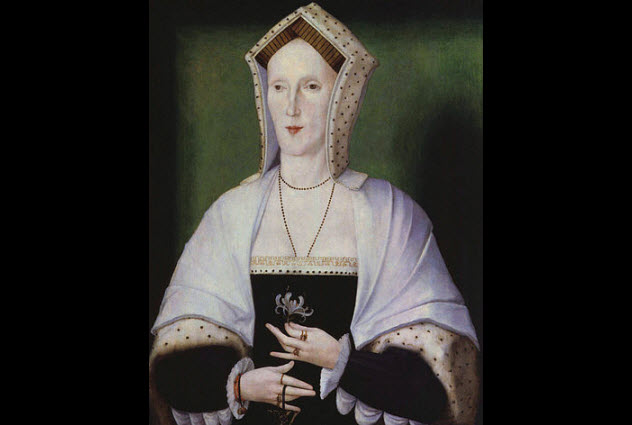
Born in 1473, Margaret Pole was the daughter of George, duke of Clarence, and the niece of Edward IV and Richard III. During this time, the War of the Roses was raging in England. Margaret’s family was embroiled in the power struggle, with her father third in line to the throne.
At war’s end, the victorious Henry Tudor was declared King Henry VII. But with Margaret and her brother in the mix, the king felt a threat might be looming. To neutralize the situation, the king executed Margaret’s younger brother and married her off at age 14 to Sir Richard Pole.
After both the king and her husband died, Margaret was given a job in the house of Henry VIII’s daughter Mary. Margaret, now countess of Salisbury, had acquired land and money with her title. Things started to take a turn for her after Henry VIII divorced Catherine, Margaret’s close companion. Even after the king married Anne Boleyn and removed all of Margaret’s supporters, she refused to leave.
Margaret’s son, Reginald, was living in self-exile because of a nearly violent disagreement with the king. After the Pope made him a cardinal, Reginald returned to England and raised an army against the king. Reginald intended to invade England in the name of the Catholic Church. The king, who accused Margaret of being involved, locked her in the Tower of London until she was 67 years old.
On the morning of her execution in 1541, the novice executioner swung the axe to behead her but missed her neck several times. He hit her in the shoulder and the head instead. Finally, Margaret Pole—the oldest woman to be executed at the Tower of London—was beheaded.
Over 300 years later, Margaret was made a saint by the Roman Catholic Church.
4 Catherine Howard
1542
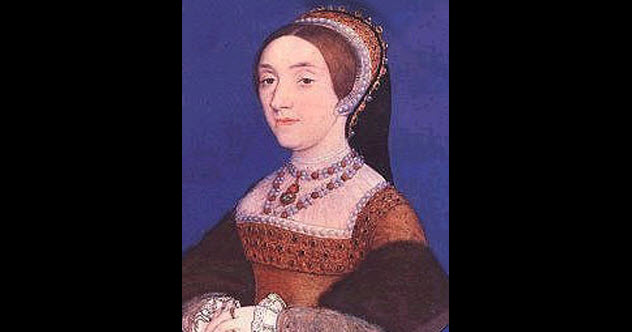
Before his marriage with Anne of Cleves was dissolved, King Henry VIII fell for the young, vibrant, and attractive lady-in-waiting Catherine Howard. Henry married Catherine 16 days after the annulment of his marriage to Anne.
Although Henry was 50 and Catherine was only 19, he needed the distraction of his young wife because he lived with painful ulcers from a jousting injury. After a year of bliss, allegations of promiscuity surrounded Catherine when she started seeking the company of other men.
It wasn’t long before word reached the king. At first, he did not want to believe the allegations. But evidence of his wife’s infidelity continued to surface.
In addition to hiring her former lover as her personal secretary, Catherine entered into an affair with Thomas Culpepper in 1541. Her indiscretions finally caught up with her, and Catherine was charged with treason. On February 13, 1542, Catherine was beheaded at the Tower of London at age 21.
3 Margaret Clitherow
1586

Margaret Clitherow was raised in a Protestant home in Yorkshire, England. But after a few years of marriage, she converted to Catholicism. Margaret was incredibly devoted to the faith. She secretly hosted mass in her home and worked to return those who had strayed from the faith.
Under Queen Elizabeth’s rule, laws were passed that acted to suppress the Catholic faith in England. Although Margaret did not abide by it, an 1855 law forbade priests from living in England and condemned to death anyone who harbored a priest.
After it was discovered that Margaret had sent her son to France illegally to receive a Catholic education, the authorities searched her home. They found that mass had been held there and that priests had also been hiding there.
As a result, Margaret was arrested. She never entered a plea and didn’t want a trial. According to English law, this meant that Margaret was to be “pressed to death.”
On March 25, 1586, Margaret was placed upon a rock with a door on top of her. Weights were piled upon the door until her back was broken and she was crushed to death. She was only 30 years old.
Margaret was canonized in 1970 and has since been called Saint Margaret Clitherow.
2 Mary, Queen Of Scots
1587
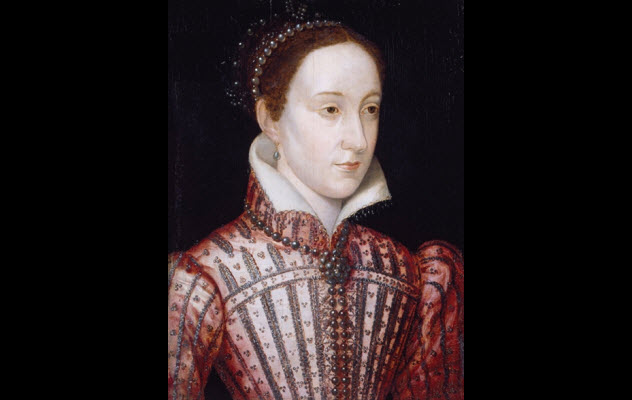
Mary Stuart was the daughter of King James V of Scotland and Mary of Guise. The king’s reign ended only six days after his daughter was born in 1542, which made her Mary, Queen of Scots, while still an infant. As she was too young to rule, her mother ruled as regent in her stead.
King Henry VIII, who had his eyes fixed on Scotland, had arranged for his son to wed the young Mary. But after Henry’s marriage to Anne Boleyn severed his ties with the Catholic Church, Scottish Catholics dismissed the idea of a union. Instead, Mary was sent to France to live in the French court where she later married Francis, the heir to the French throne.
When Elizabeth became queen, her crown was threatened by Roman Catholic claims that she was unfit to rule and that her parents’ marriage was invalid. It was then that Mary’s claim to the throne was laid.
After Francis died of an ear infection in 1559, Mary went back to the newly Protestant Scotland despite religious tensions. Later, she married Elizabeth’s cousin Henry Stewart, who turned out to be cold and ruthless.
Mary wanted nothing more to do with her husband, and it is alleged that she arranged to have him killed. Adding insult to injury, she married the man who was the main suspect in Stewart’s death. That scandal was the nail in her coffin. Her new husband was exiled, and she was imprisoned.
After Mary escaped, she sought refuge in England with her cousin Elizabeth. But the English queen showed no mercy and imprisoned Mary for 18 years. When it was discovered that Mary had been involved in an assassination plot against the queen, she was charged with treason and sentenced to death. Mary Stuart was beheaded on February 8, 1587.
1 Anne Boleyn
1536
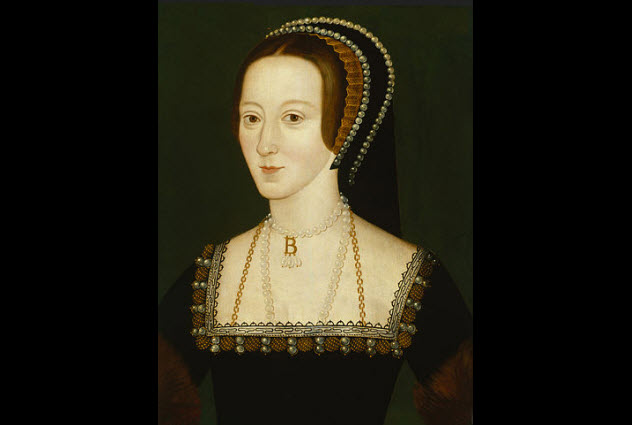
Born circa 1501, Anne Boleyn was initially sent to live in France. Then she returned to England to serve as a lady-in-waiting to Catherine of Aragon, the future queen.
While at court, Anne bewitched King Henry VIII, who wrote in a letter to her: “If you . . . give yourself up, heart, body, and soul to me . . . I will take you for my only mistress, rejecting from thought and affection all others save yourself, to serve only you.”
At the time, Anne refused to be the king’s mistress. Desperate, Henry campaigned to have his marriage to Catherine annulled on the grounds that their marriage was an abomination in the eyes of God because she was the widow of Henry’s brother and thus unable to give birth to a son.
During the six-year conflict between Henry and the Catholic Church, Anne became pregnant by him. In 1533, she and Henry married without the Pope’s blessing. Much to the dismay of the general public, Anne was crowned queen of England the following year. Anne had a daughter, Elizabeth, during her marriage to the king. However, two subsequent deliveries resulted in stillborn babies.
Now married to the woman he desired, Henry broke from the Catholic Church to form the Church of England in 1534. Shortly after, however, the marriage began to fall apart due to Henry’s infidelity and Anne’s raging jealousy.
When Anne delivered another stillborn baby, Henry decided that he wanted to replace Anne with Jane Seymour, one of his mistresses. As a result, Anne was imprisoned on a number of false charges, including adultery and incest. She was sentenced to death on May 19, 1536, and beheaded by a single blow of the sword.
